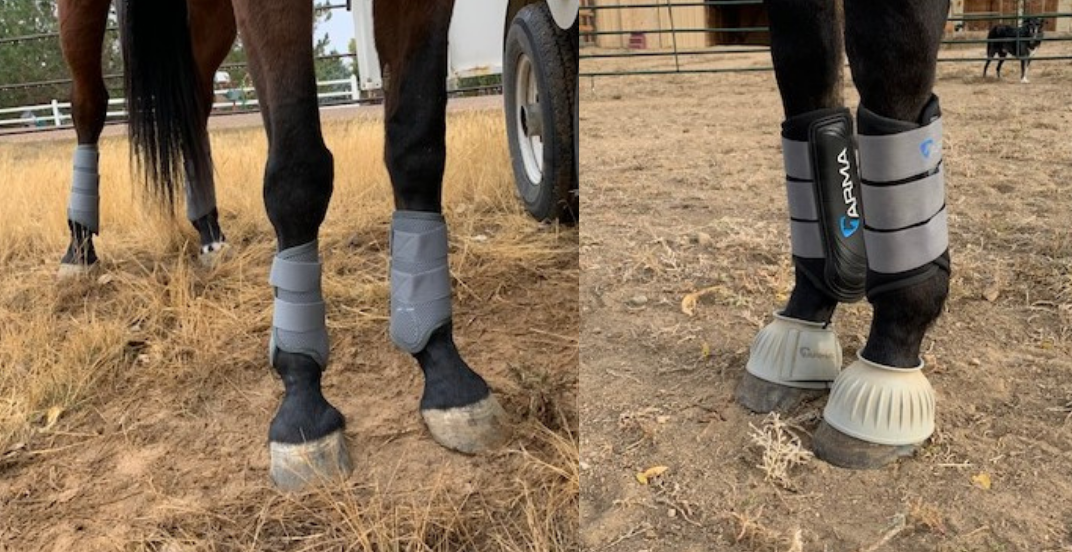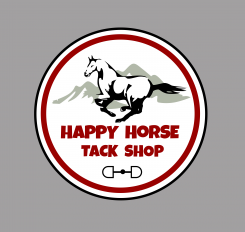Leg Protection
- Posted on
- By Happy Horse Tack Shop
- 0

There are so many different leg protection options out there, and the market is ever growing. So how do you know what is best for your horse and it’s needs? Well let's discuss!
Why do horses need leg protection?
Just like human athletes, horses may need some extra protection and support when competing. Horses legs absorb a large amount of impact, and horses have no muscle padding in their lower legs, which only consist of tendon, bones, ligaments and cartilage. Not to mention that the front legs carry 60% of a horse's body weight and the hind end carries the other 40% and creates power and compulsion. So providing extra padding and support to the hoofs and legs can help prevent major injuries and problems. Leg protection can help minimize contact with obstacles, prevent interference from the horse's own legs and offer protection from ground debris, while also providing extra support. Depending on your horse's specific problems and the sport you are competing in, some boots may be a better option for you than others.
Types of Boots:
Bell Boots/Overreach Boots - Bell boots and overreach boots are the same thing. They can be made out of different materials, be lined or unlined and be pulled on or fastened around the hoof. These boots circle the pastern and cover the entire hoof. They act as a shell and prevent horses from overreaching and obstacles from hitting the hoof.
Polo Wraps - Polo wraps are made of strong, shock absorbent felt and provide light protection and support. They can also help reduce swelling and inflammation. They do not provide a ton of protections, so are usually only used for groundwork or lunging.
Tendon Boots - Tendon Boots are used to protect the horses front tendon from being struck by the back foot. They are usually taller than a brushing boot to cover the whole tendon. They are sometimes lined, especially if they’re made of leather. Tendon boots can be made of many different materials and have many different kinds of closures and clasps. They are also sometimes open in the front to encourage horses not to hit jumps and tuck up better. These boots are only worn on the front legs.
Brushing Boots/Splint Boots - Brushing boots are also used to keep horses from interfering with themselves. They are designed with the most protection running along the splint bone, but do protect the leg all the way around. These boots can be worn on the front and back legs. They should always have the splint guard on the inside and the straps facing towards the back end of your horse.
Sports Medicine Boots - Sports Medicine Boots are similar to brushing boots in that they protect the leg from interference and abrasions, but they also offer support of the lower leg to prevent sprains, hyperextension and suspensory injuries. Unlike brushing boots they cover the pasterns and fetlocks as well. They can be worn on the front and back legs.
Fetlock/Ankle Boots - Fetlock boots are a shortened version of brushing boots. They are worn on the hind legs to prevent knocking by the opposite leg.
Skid Boots - Skid boots provide protection to a horse's front fetlocks. They prevent lower leg injuries in reining, roping and cutting horses that make quick turns and sliding stops and are at risk for hitting their front fetlocks with their back feet.
Sesamoid Boots - Sesamoid boots are very similar to a brushing or tendon boot, but provide more protection to the base of the fetlock joint and heels. They are usually used in speed events.
Stable Boots - Stable boots are used post workout to prevent swelling and fluid build up. They should not be used while riding and are meant just to go on horses while stalled.
Size and Fit
Boots should fit snugly around the horse's leg so that they will not fall down or shift during exercise. They should not cause rubbing and should not be too tight where they may cut off circulation. In general you should be able to slip a finger in between the boot and the horse's leg. All straps should wrap and close towards the outside or back. Boots should be kept clean and dry to prevent chafing, rubbing or fungal issues. Follow manufacturer size charts when unsure how to size and where the boots should sit and cover.
If you are not sure what kind of boot you need or how to properly size or fit them our staff is more than happy to help! Feel free to stop by or reach out by phone or email and we would be happy to get you the proper boots for your needs!!
(970) 484 - 4199 | www.happyhorsetack.com | [email protected] |113 Peterson Street

Comments
Be the first to comment...